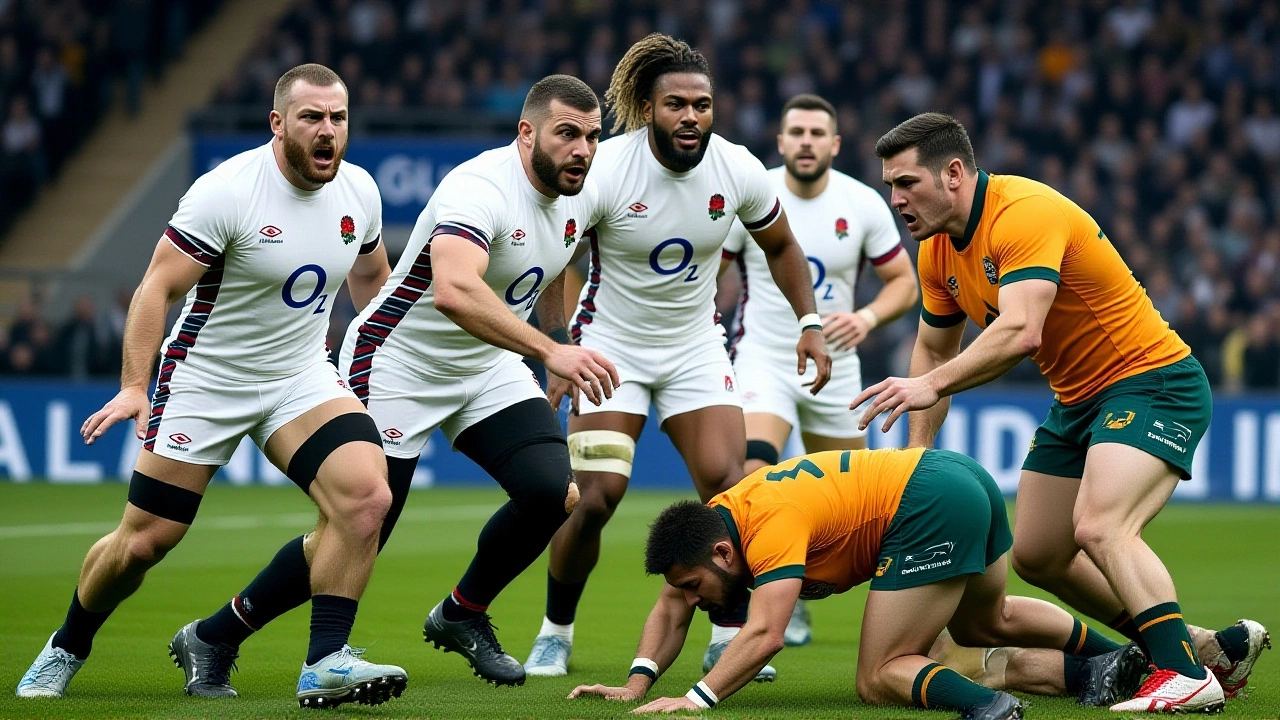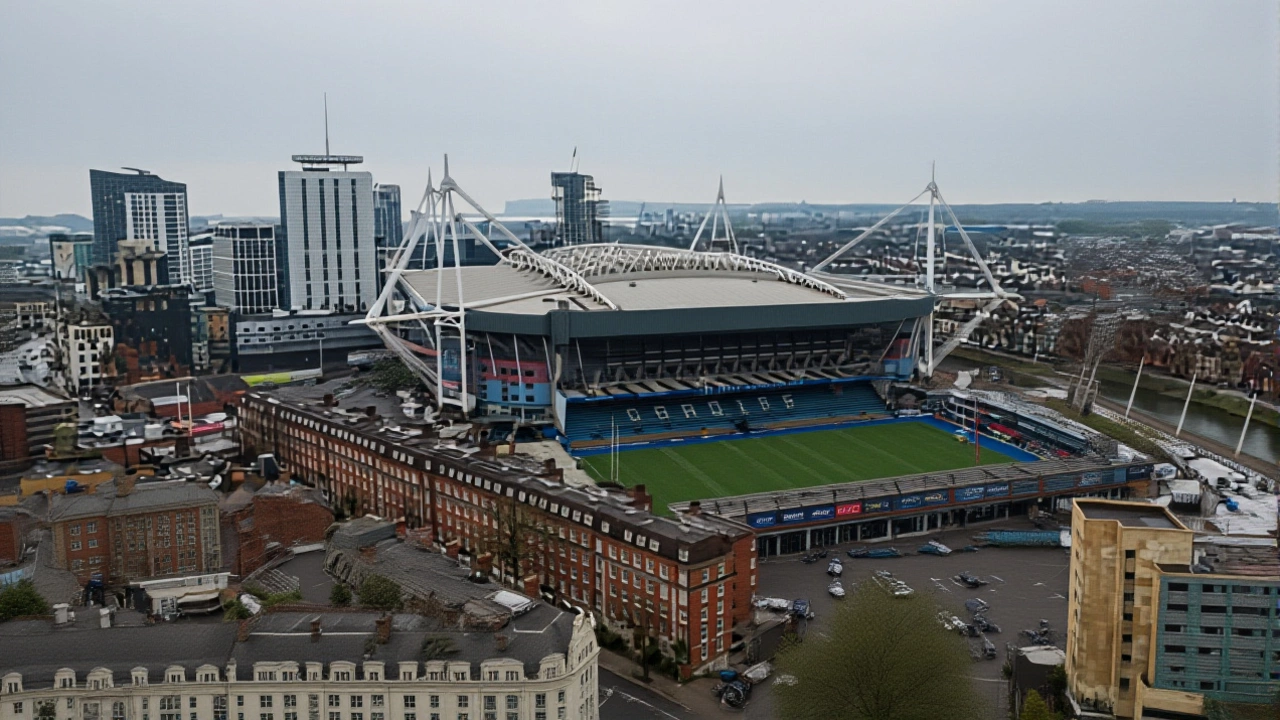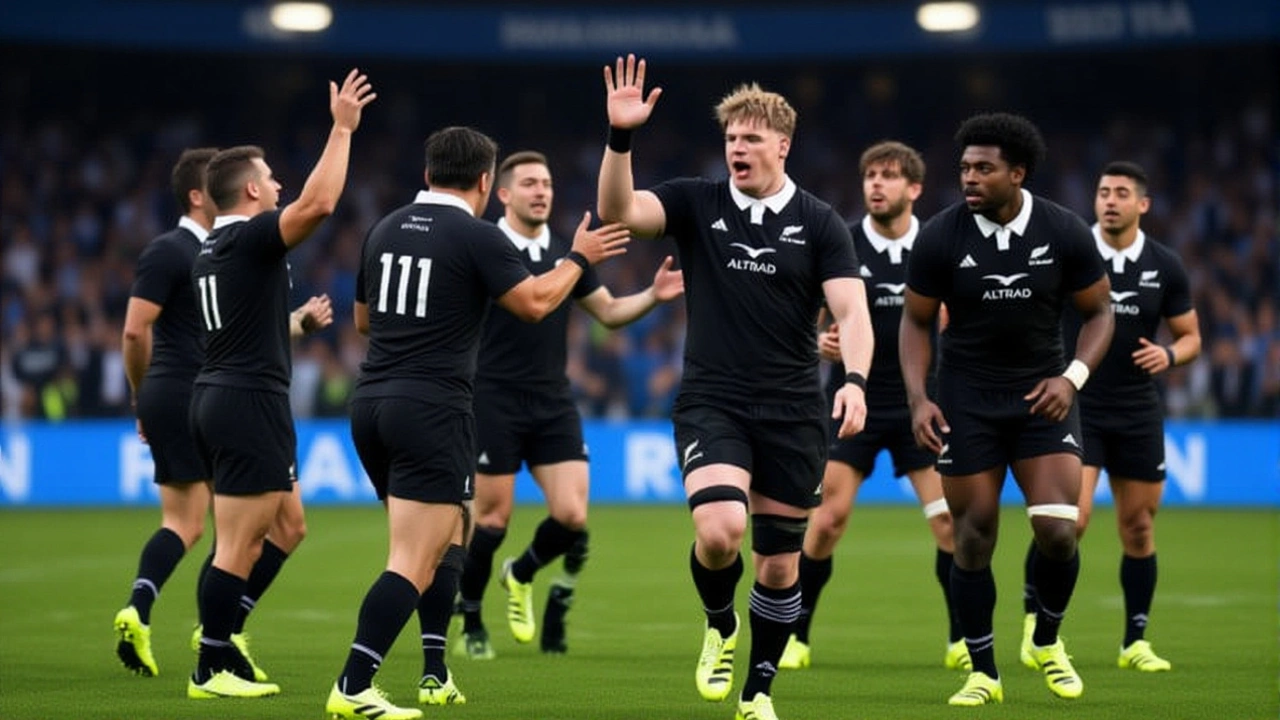The New Zealand All Blacks reclaimed supremacy over Ireland with a commanding 26-13 victory at Soldier Field in Chicago on November 1, 2025 — not just winning a match, but seizing the Gallagher Cup after a bruising, emotionally charged encounter that turned on a single red card and a second-half explosion of skill. The crowd, packed to the rafters along the shores of Lake Michigan, roared like a storm surge as the All Blacks’ Kapa O Pango haka, led by captain Codie Taylor, sent chills through the stadium. And then, the game began — and everything changed.
The Turning Point: Red Card and Rising Tensions
The match started with Ireland striking first. At the 16th minute, they led 10-7, riding a wave of physicality and precision that had stunned the All Blacks just seven years earlier in this same city. But then, at the 22nd minute, chaos erupted. A reckless high tackle — later confirmed by match officials as a dangerous, intentional strike to the head — earned a red card for an unnamed Irish forward. The decision, though controversial among Irish fans, shifted the momentum like a tide turning. The All Blacks didn’t just survive the numerical disadvantage; they weaponized it. By halftime, they’d tightened their defense, absorbed the pressure, and waited. And when the second half began, they unleashed it.Will Jordan’s Break and the Floodgates Open
The turning moment came at the 48th minute. Will Jordan, the All Blacks’ electrifying winger, received a short pass near the 22-meter line, feinted left, spun right, and found a sliver of space no one else saw. His offload to Ardie Savea was a thing of poetry — perfectly timed, perfectly placed. Savea, already a force of nature, powered through two tackles and slammed the ball down for a try. The scoreboard flipped: 14-10. The crowd went silent, then erupted. That was the spark. Three more tries followed in the next 18 minutes — two from the All Blacks’ relentless forward pack, one from a surgical kick-and-chase by fly-half Beard Porter (not to be confused with Andrew Porter, Ireland’s tighthead prop, who was visibly frustrated after being repeatedly nullified).A Rivalry Rekindled: Chicago’s Rugby Legacy
This wasn’t just another test match. It was the second chapter in one of rugby’s most compelling modern rivalries. When Ireland beat the All Blacks 40-29 at Soldier Field in 2016, it ended 111 years of New Zealand dominance — a seismic moment that rewrote history. Since then, the teams have played 10 times. Five wins each. A perfect stalemate. But on this night, the All Blacks reclaimed the narrative. The Gallagher Cup, awarded to the winner of this biennial clash, returned to New Zealand’s hands. And Chicago? It turned green — then gold. Irish fans in green jerseys stood shoulder-to-shoulder with Kiwi supporters in black, all of them united by the spectacle. The stadium’s official fan tailgate, complete with open bars and lawn games, buzzed into the night. Windy City Limousine reported its busiest day ever.
Who Played, Who Stood Out
While the red card and Jordan’s break dominated headlines, the match was defined by quiet excellence. Tommy O’Brien anchored Ireland’s midfield with grit, but his support lines were consistently shut down. Royard, Ireland’s scrum-half, struggled under pressure, losing two key lineouts. Meanwhile, New Zealand’s Codie Taylor — the man who led the haka — delivered a masterclass in leadership, directing the scrum and making critical tackles in the 70th minute that snuffed out Ireland’s last serious attack. The All Blacks’ scrum, often a vulnerability in recent tours, was flawless. They won six penalties at the set piece — a stat that tells you everything.What This Means for the Northern Tour
This win opens the All Blacks’ 2025 Northern Tour with maximum momentum. Next up: a showdown with England at Twickenham on November 15. Then, a potential title-deciding clash with Wales in Cardiff. Ireland, meanwhile, must regroup. Their forward pack was outmuscled, their attack too predictable. The loss ends a two-year winning streak against New Zealand — their last victory came on July 9, 2022, in Dublin. For New Zealand, it’s a statement: they’re not just back. They’re hungry.
Behind the Scenes: The Chicago Experience
Soldier Field didn’t just host a rugby match — it became a global stage. Parking lots opened at 11 a.m. CST. ADA access was managed at Gate 14 with placard checks. Over 60,000 tickets were sold — a record for a rugby match in the U.S. Midwest. The event, promoted by TEG Sport and broadcast by NBC Sports, drew fans from 37 countries. One Irish supporter, 72-year-old Seamus Byrne from Cork, told reporters: “I’ve seen them beat us. I’ve seen us beat them. But tonight? This was the game I’ll tell my grandkids about.”Frequently Asked Questions
Who received the red card in the match, and why was it controversial?
The red card was issued to an unnamed Irish forward for a high, dangerous tackle on All Blacks fly-half Beard Porter in the 22nd minute. While Irish fans argued it was a borderline call, World Rugby’s post-match review confirmed the decision was correct under Law 9.13, which prohibits contact above the shoulders with force. The controversy stemmed from the timing — Ireland was leading 10-7 — and the fact that the player was a key contributor in the scrum, weakening Ireland’s set-piece.
How does this result affect the All Blacks’ standing in world rugby?
The win lifts the All Blacks to No. 2 in World Rugby rankings, just behind South Africa, and reestablishes their dominance after a shaky 2024 season. Winning the Gallagher Cup against Ireland — one of the top two teams globally — signals they’re back as serious World Cup contenders in 2027. Their 2025 Northern Tour record now stands at 2-0, with wins over Ireland and a prior 38-10 defeat of Italy.
Why is this match called ‘The Rematch’?
It’s called ‘The Rematch’ because it’s the second meeting between Ireland and the All Blacks at Soldier Field since Ireland’s historic 40-29 win in 2016 — the first time they’d beaten New Zealand in 111 years. The 2025 game was explicitly marketed as a continuation of that legacy, with TEG Sport promoting it as the ‘Gallagher Cup Rematch’ to honor the rivalry’s emotional weight and global fan interest.
What’s next for Ireland after this loss?
Ireland faces a critical rebuilding phase. Their next test is against Argentina on November 18 in Dublin, followed by a November 23 clash with Australia. Coach Andy Farrell has already hinted at tactical changes, particularly in the back-row and scrum-half roles. The loss exposes weaknesses in their ability to adapt under numerical disadvantage — a flaw that could haunt them in the 2027 World Cup if unaddressed.
Was this the biggest rugby crowd in U.S. history?
No — but it’s the second-largest. The record stands at 65,000, set during the 2016 Ireland vs. All Blacks match at Soldier Field. This game drew 63,802, according to Chicago Stadium Authority data. Still, it’s the largest rugby crowd in the Midwest and the largest for a non-World Cup match in the U.S. since 2019. The growth of rugby in the U.S. is undeniable — especially in cities like Chicago, where the sport’s global appeal is thriving.
What’s the significance of the Gallagher Cup?
The Gallagher Cup is a trophy contested exclusively between Ireland and New Zealand during their biennial matches in the Northern Hemisphere. First awarded in 2017, it symbolizes the rivalry’s intensity and mutual respect. The winner keeps the cup until the next meeting. New Zealand now leads the trophy count 3-2, with this 2025 win marking their third victory since the cup’s inception. It’s not an official World Rugby trophy, but for fans, it’s as meaningful as any.
